
Distinguir lo bueno de lo mejor 8 maravedís de Isabel II Blog Numismatico
The maravedi remained the standard gold coin until 1537, when the escudo became the primary gold currency. Since then, the Spanish have also introduced the centimo and the peseta. Currently, Spain is a member of the European Union and uses the Euro as its standard currency. Maravedi Coin, Salamanca Reign (1188-1230) MARAVEDIS

Distinguir lo bueno de lo mejor 8 maravedís de Isabel II Blog Numismático
¿Alguno sabe a cuanto equivale un maravedí a euros? Es simplemente por saber, me refiero a la época de los Austrias. Saludos y gracias. argentino.070 TRIBVNO Cantidad de envíos : 3667 Edad : 58 Localización : gijon,asturias • Actividad : 1441 Fecha de inscripción : 01/05/2013 Tema: Re: ¿A cuánto equivale un maravedí? Jue 14 Nov 2013, 9:38 pm
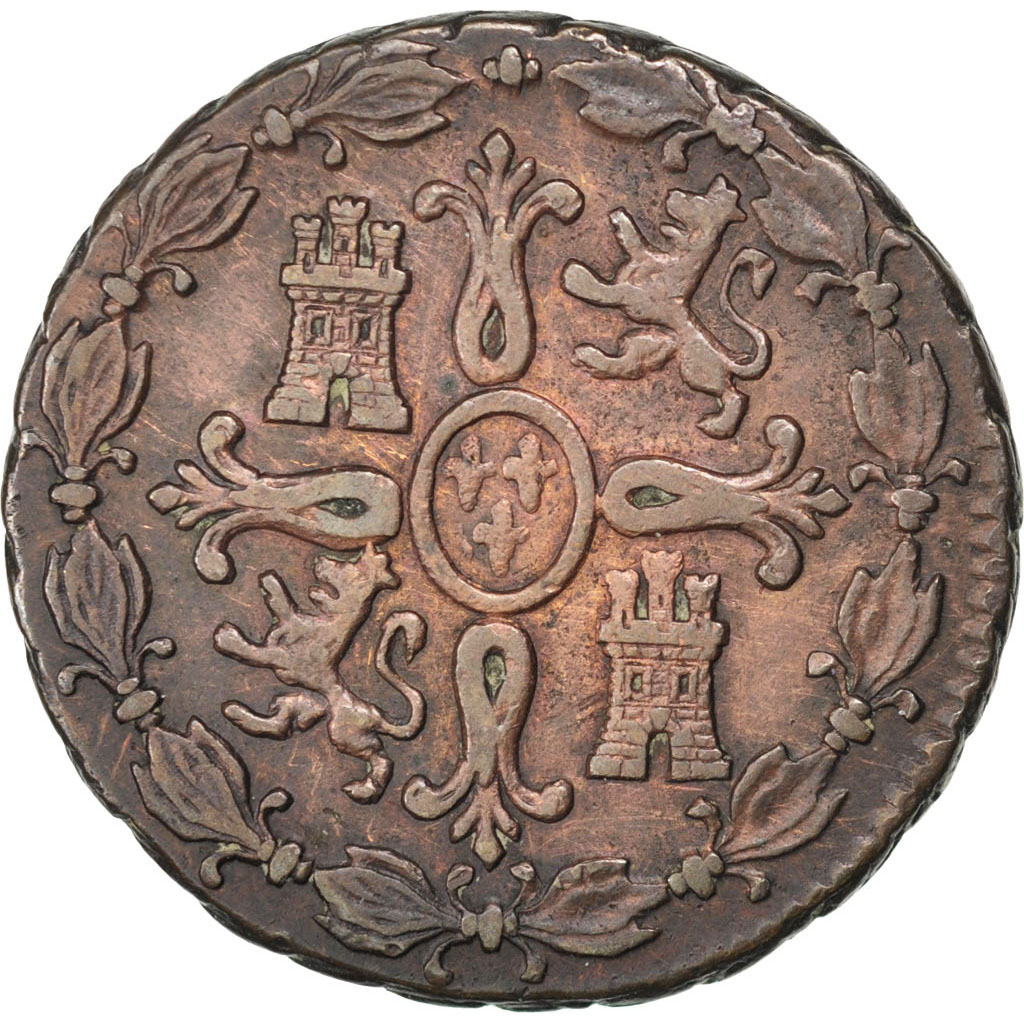
32546 Espagne, Ferdinand VII, 8 Maravedis, 1825, Ségovie TTB, 8 Maravedis, De 51 à 150 Euros
Detailed information about the coin 4 Maravedis, Felipe IV, Spain, with pictures and collection and swap management: mintage, descriptions, metal, weight, size, value and other numismatic data
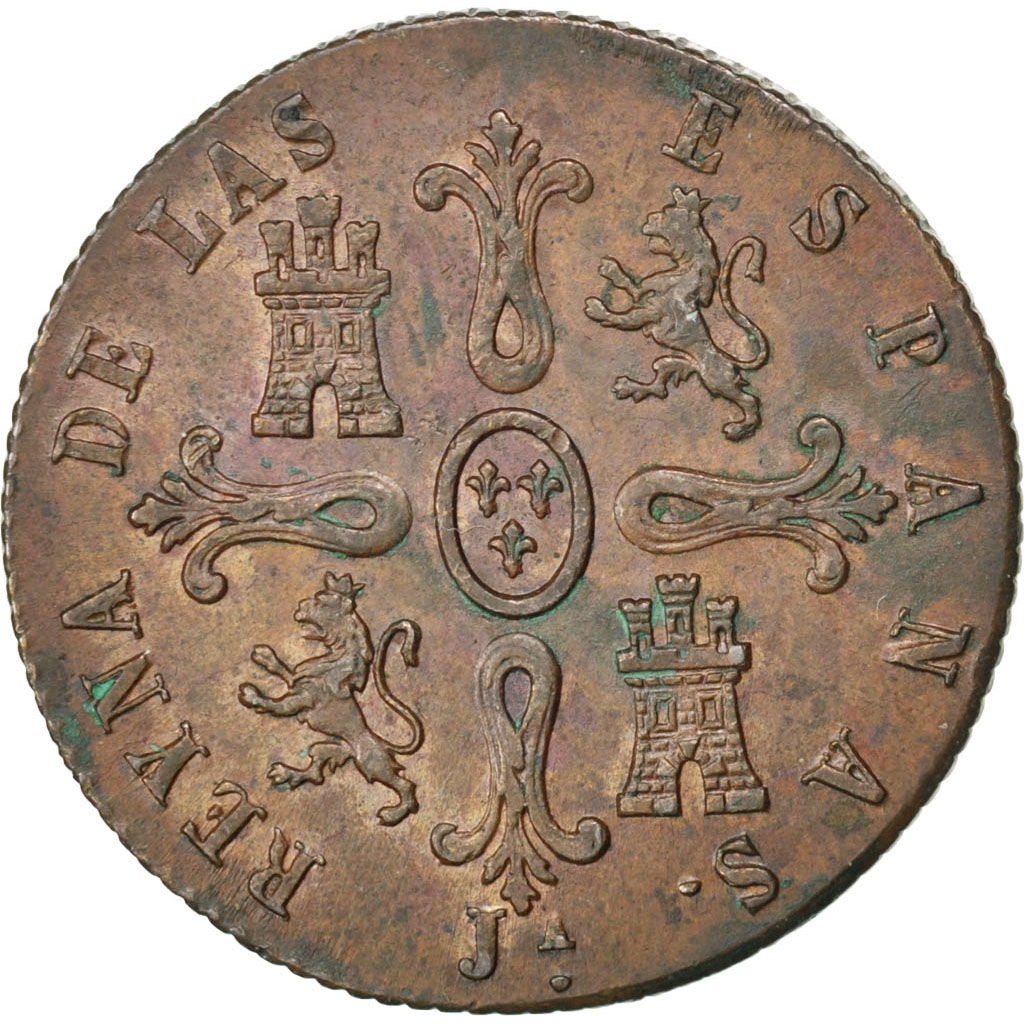
32560 Espagne, Isabelle II, 8 Maravedis, 1850, Jubia SUP, 8 Maravedis, De 151 à 500 Euros
Spain changed its currency from peseta to euro in 2002. Euro is the current currency of Spain. From 1989 to present many coins of precious metals have been struck for collectors.. 1 Real = 4 Cuartillos = 34 Maravedis · 1 Maravedi = 2 Blancas · 1 Escudo = 16 Reales · 1 Excelente = 375 Maravedis. 1 Blank - Ferdinandus V and Elisabet I
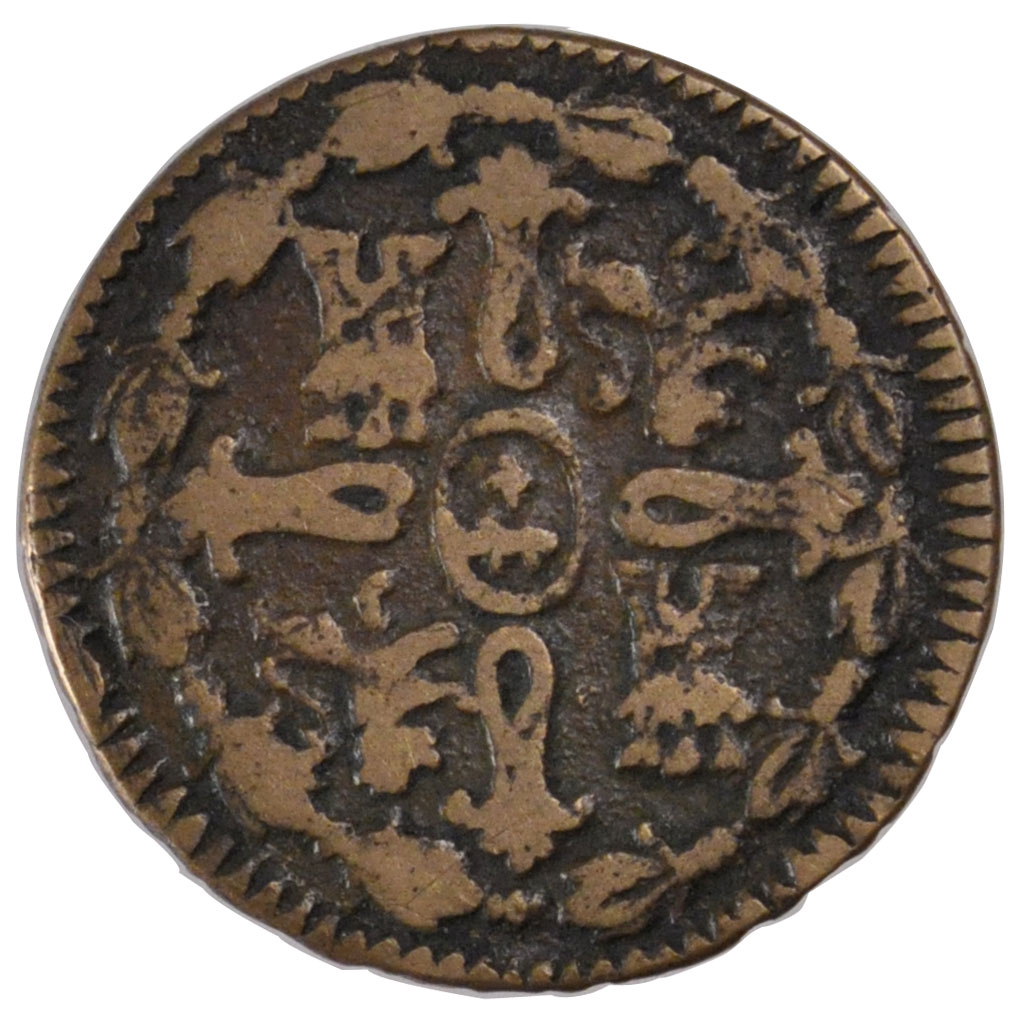
56996 Espagne, Ferdinand VII, 8 Maravedis TB+, 8 Maravedis, De 16 à 50 Euros, Bronze, 1817
Duplicate this page. Detailed information about the coin 8 Maravedis, Felipe IV, Spain, with pictures and collection and swap management: mintage, descriptions, metal, weight, size, value and other numismatic data.
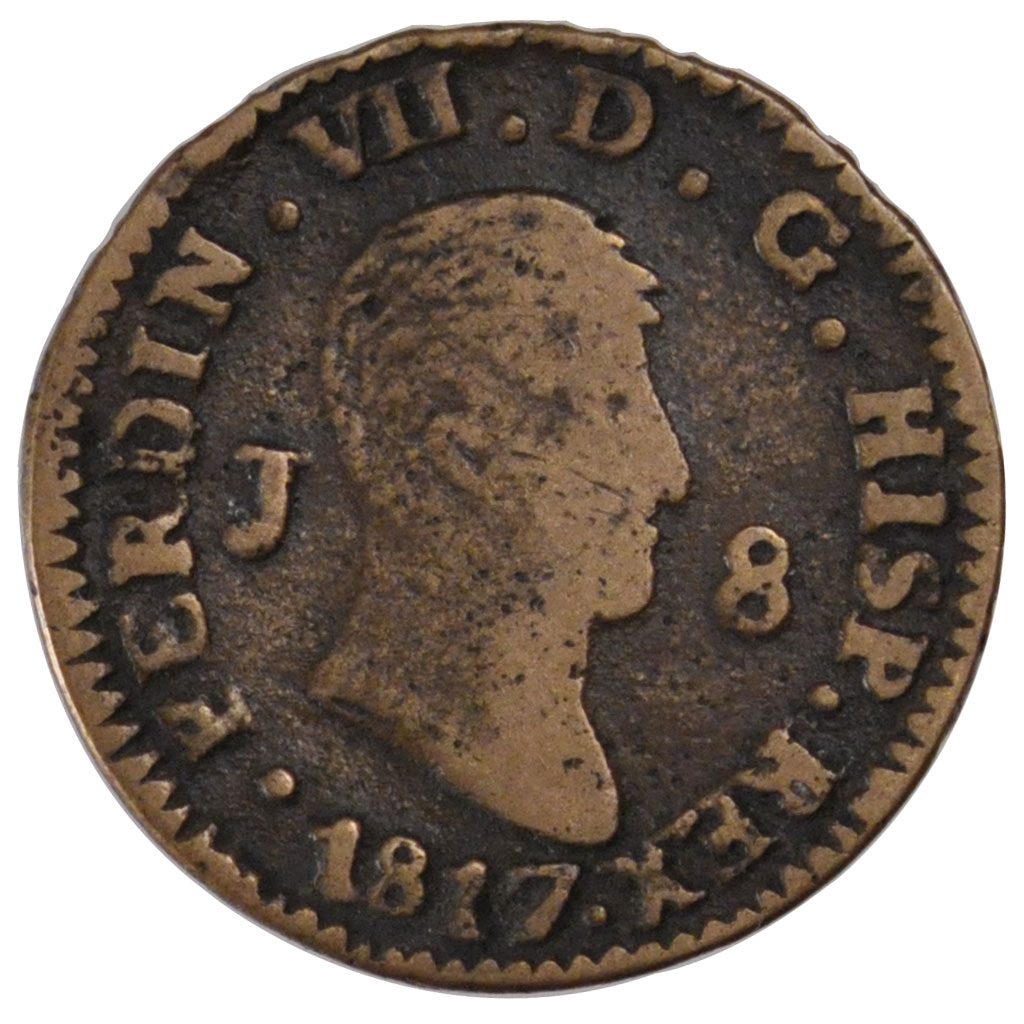
56996 Espagne, Ferdinand VII, 8 Maravedis TB+, 8 Maravedis, De 16 à 50 Euros, Bronze, 1817
The maravedí or maravedi , , was the name of various Iberian coins of gold and then silver between the 11th and 14th centuries and the name of different Iberian accounting units between the 11th and 19th centuries.

503141 Espagne, Ferdinand VII, 8 Maravedis, 1820, Jubia, TTB, Cuivre, KM491 TTB, 8 Maravedis
Duplicate this page. Detailed information about the coin 8 Maravedis, Carlos IV, Spain, with pictures and collection and swap management: mintage, descriptions, metal, weight, size, value and other numismatic data.

56999 Espagne, Isabelle II, 8 Maravedis TTB+, 8 Maravedis, De 51 à 150 Euros, Jubia, Cuivre
The maravedí ( Spanish pronunciation: [maɾaβeˈði]) or maravedi ( Portuguese pronunciation: [mɐɾɐvɨˈði] ), (from Arabic: الدينار المرابطي Almoravid dinar ), was the name of various Iberian coins of gold and then silver between the 11th and 14th centuries and the name of different Iberian accounting units between the 11th and 19th centuries.
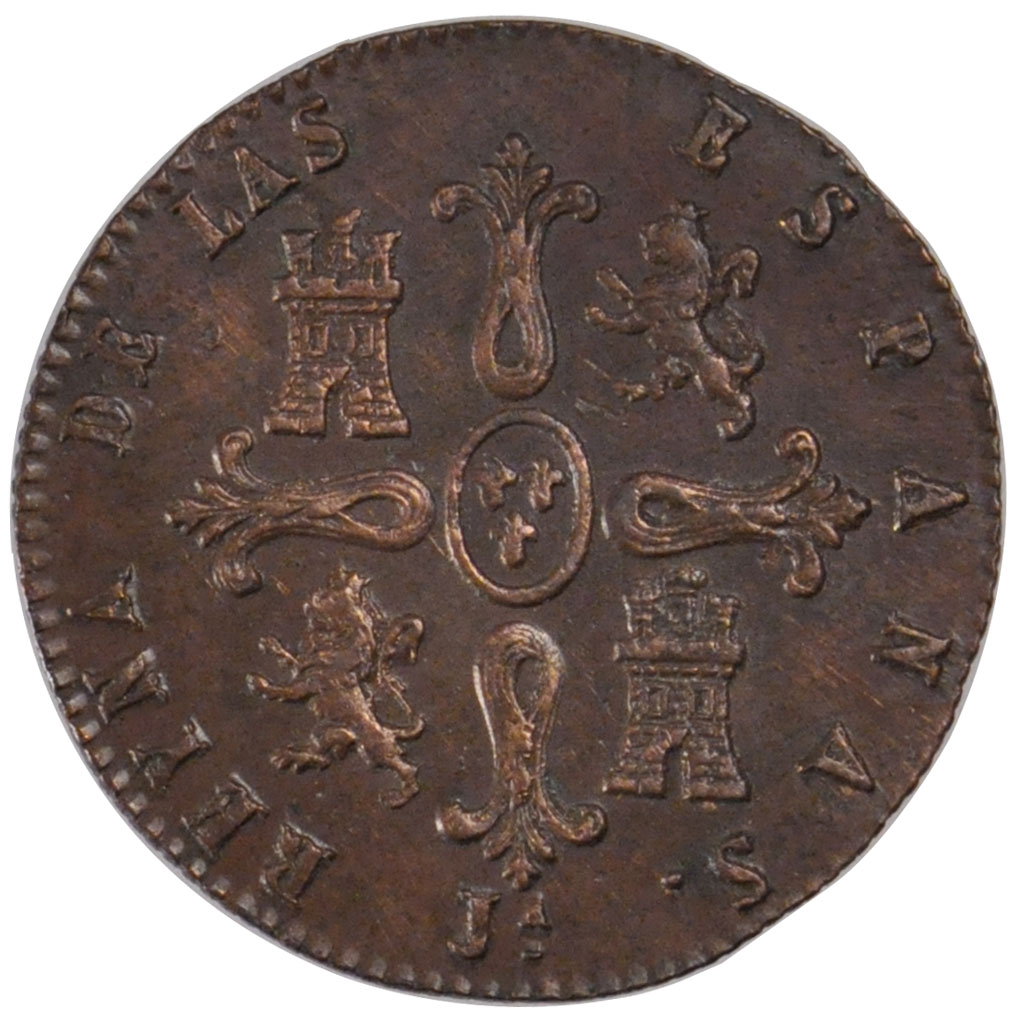
56999 Espagne, Isabelle II, 8 Maravedis TTB+, 8 Maravedis, De 51 à 150 Euros, Jubia, Cuivre
Maravedis (also known as morabitinos), were the most important currency for trade between the Christian states and the Arab countries. They were imitations of the gold dinars issued by the Arabs in southern Spain and northern Africa at that time.
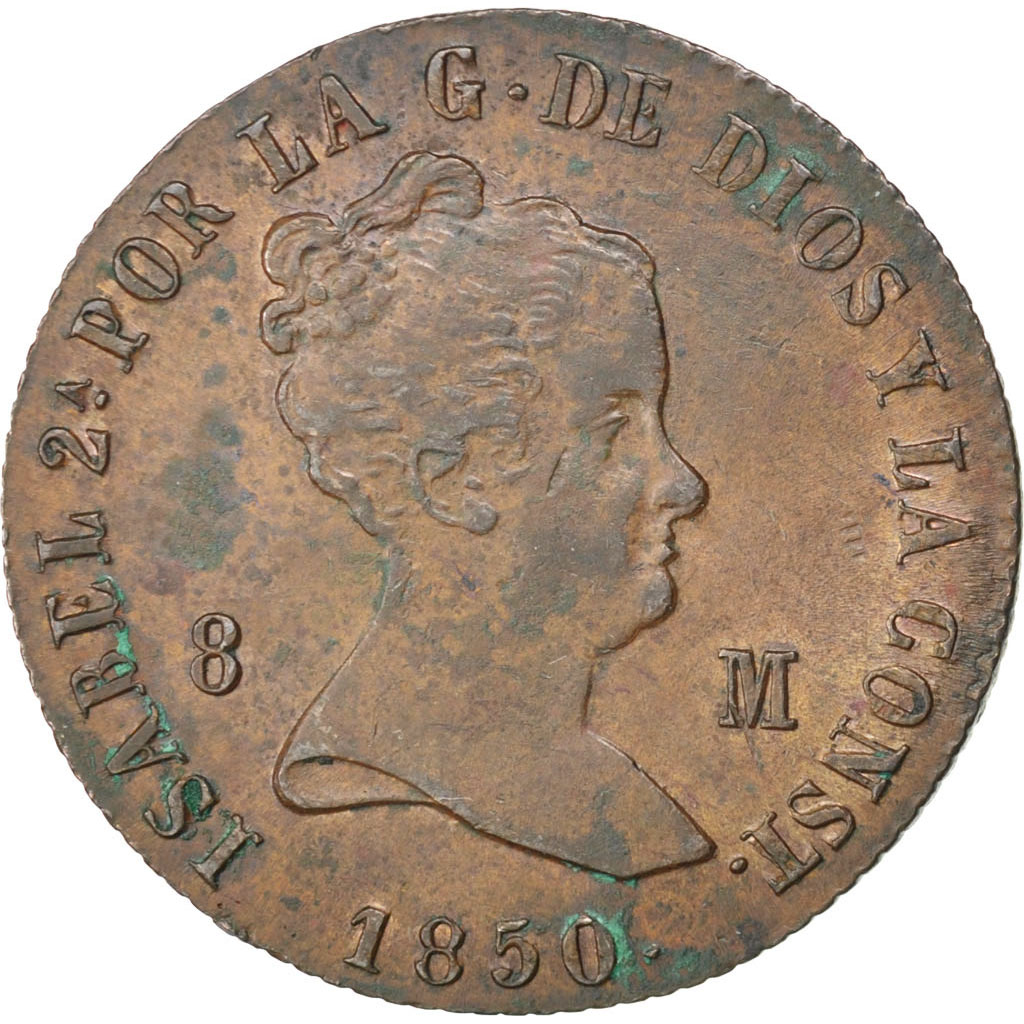
32560 Espagne, Isabelle II, 8 Maravedis, 1850, Jubia SUP, 8 Maravedis, De 151 à 500 Euros
Conversión de maravedís a euros constantes

503141 Espagne, Ferdinand VII, 8 Maravedis, 1820, Jubia, TTB, Cuivre, KM491 TTB, 8 Maravedis
Unlike Spain, where copper coins called moneda de vellón circulated widely in various denominations of maravedís, no copper money or maravedís were coined in America, preserving the integrity of the peso de ocho and reales both in the Indies and worldwide.
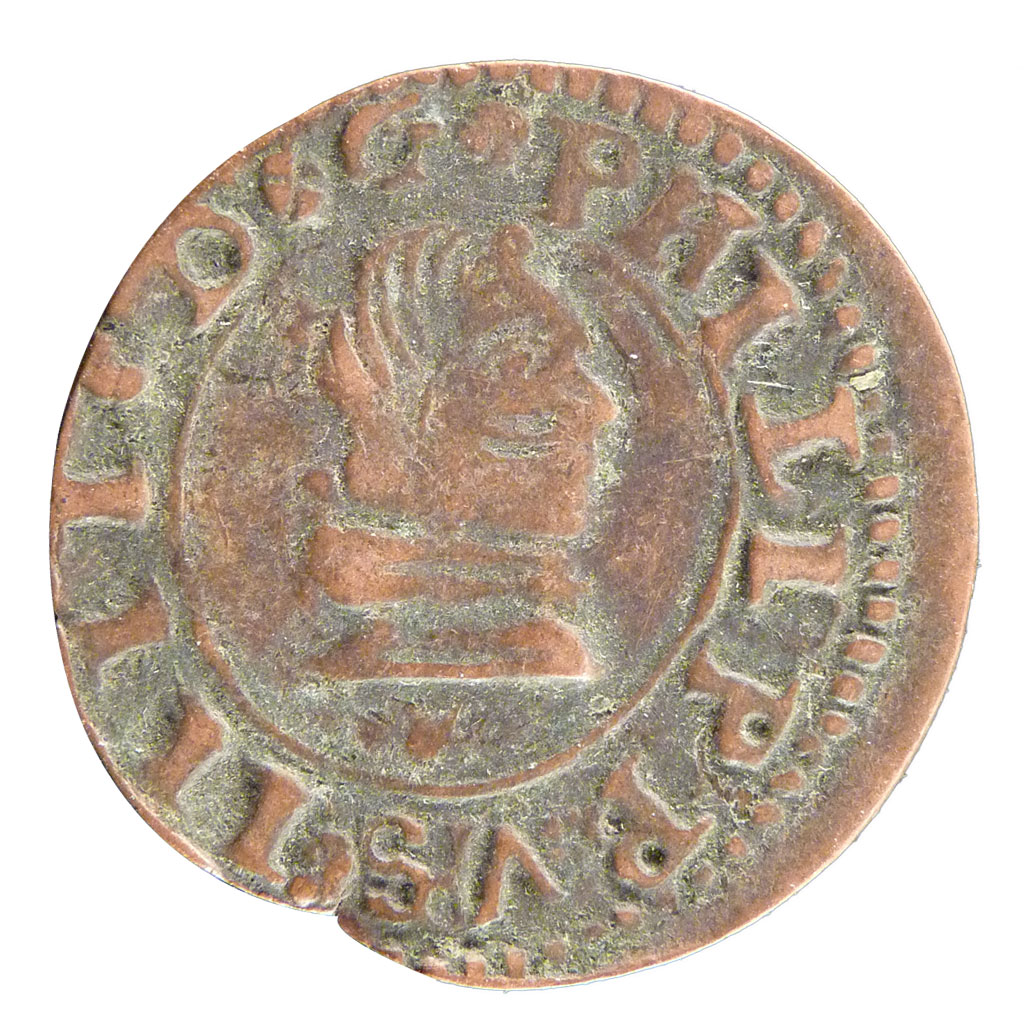
21032 Philippe IV , Espagne, 16 Maravedis TB, 16 Maravedis, De 5 à 15 Euros, Ségovie, Bronze
DEL MARAVEDÍ AL EURO (DESDE FELIPE V HASTA FELIPE VI) POR FRANCISCO JOSÉ ROZADA MARTÍNEZ, CRONISTA OFICIAL DE PARRES-ARRIONDAS (ASTURIAS) FELIPE V (1738) - 8 escudos de oro.
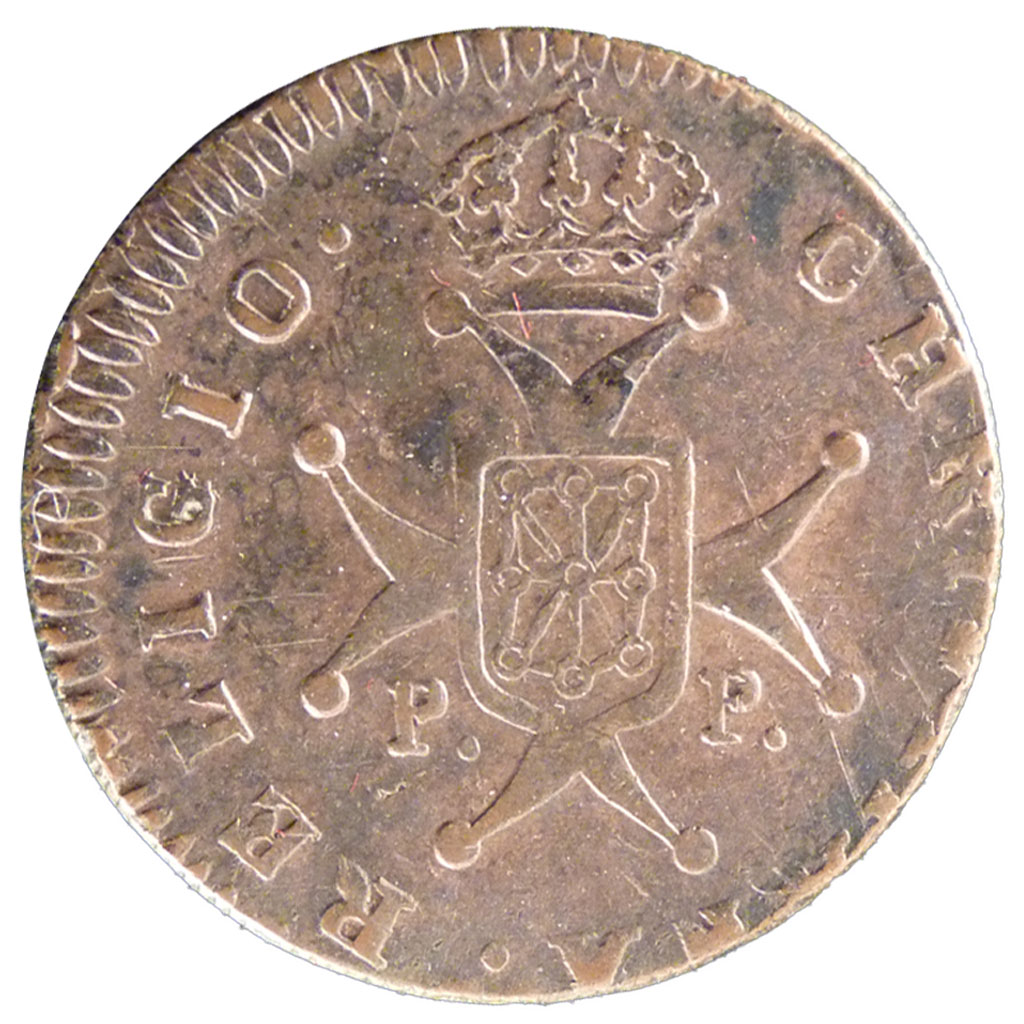
21044 Ferdinand III, Espagne, Royaume de Navarre, 3 Maravédis TB+, 3 Maravédis, De 51 à 150
Dec. 9, 2023, 4:59 PM ET (AP) Technology built the cashless society. Advances are helping the unhoused so they're not left behind cash, in commercial use, coins and bank notes, as distinguished from promissory notes, drafts, and other forms of obligations payable. Cash is legal tender and is by law acceptable in payment of all debts. cash

25519 Espagne, Philippe IV, 16 Maravedis SUP+, 16 Maravedis, De 151 à 500 Euros, Madrid
Your search for 'maravedis' matched 994 lots from auctions added in the last six months. To search our full database of over 8 million records, please subscribe to CoinArchives Pro. Search for 'maravedis' in upcoming auctions at Your search for 'maravedis' matched 994 lots from auctions added in the last six months.
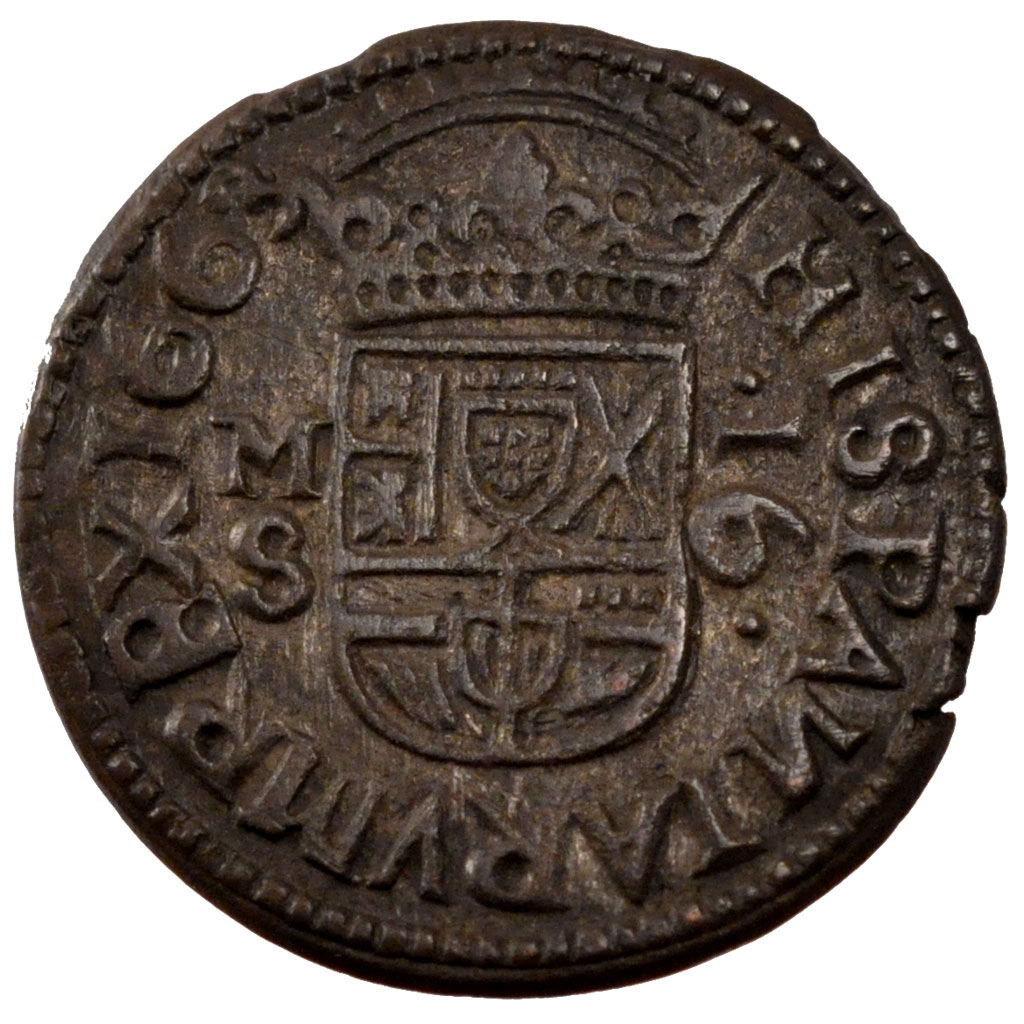
25519 Espagne, Philippe IV, 16 Maravedis SUP+, 16 Maravedis, De 151 à 500 Euros, Madrid
El resumen es que 1 maravedí viene a ser, aproximadamente, 10 céntimos de euro. Haciendo equivalencias con las monedas: Un Real (34 maravedís) es 3,4 euros, un Ducado (375 maravedís) 37,5 euros y un Escudo (que son unos 400 maravedís) 40 euros.
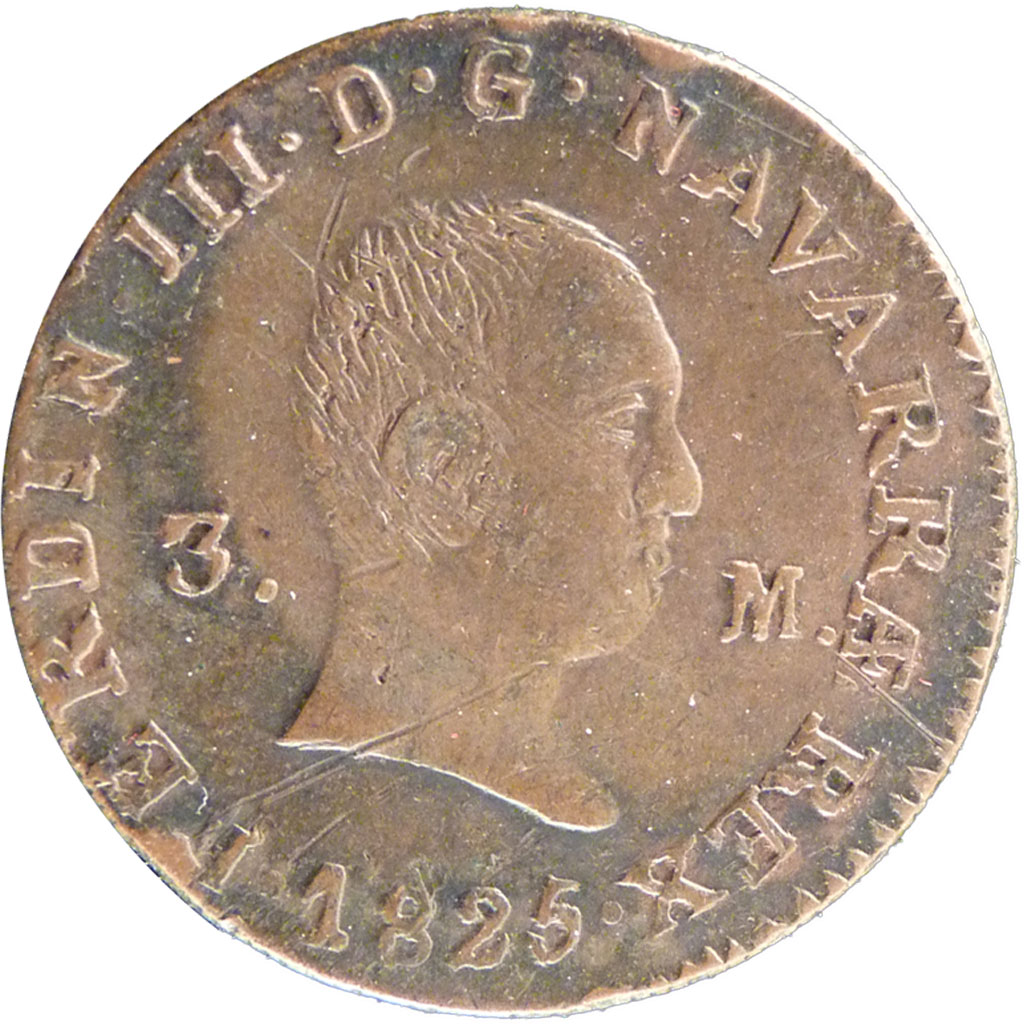
21044 Ferdinand III, Espagne, Royaume de Navarre, 3 Maravédis TB+, 3 Maravédis, De 51 à 150
Also, maravedis were a smaller unit of currency than a real (coin made of silver) or a escudo (coin made of gold). It was frequently used as a book keeping unit because it could be converted into either silver or gold specie. In some ways it would be like calculating using the penny. For example, in 1497 a real was made up of 34 maravedis and a.